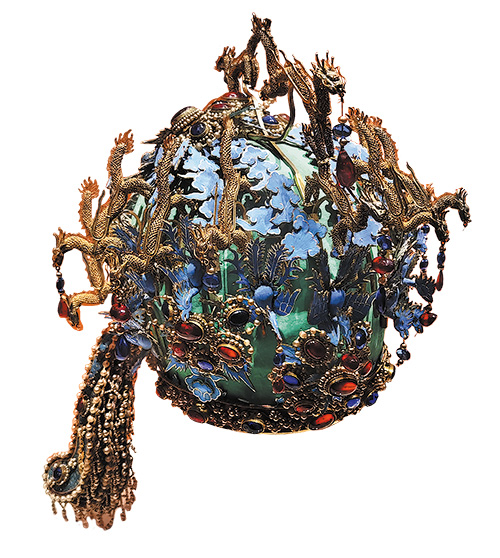Witness of history
A four-month exhibition provides an opportunity to reassess the life and times of Ming Emperor Wanli, Wang Kaihao reports.
By Wang Kaihao | China Daily | Updated: 2023-05-15 08:11

Also during his reign, Italian Jesuit priest Matteo Ricci became the first European to enter the Forbidden City, opening the connections between the East and the West through cross-cultural communication. The isolationist policy upheld by his predecessors, which kept off pirates but restricted foreign trade, began to loosen and booming overseas trade across the high waves reemerged.
"Trade during the age of exploration brought material civilization from overseas into China and thus enabled exchanges and mutual influence among various cultures," Feng explains. "Urban culture boomed and the publishing industry particularly flourished. Communication of thoughts created amazing sparks and bred rich cultural fruits."
In 2007, archaeologists found a shipwreck off the coast of Nan'ao Island of Shantou, Guangdong province. It was believed to be from the late Ming, roughly the Wanli era. Most salvaged ceramics from the shipwreck, called Nan'ao One by archaeologists, were exported products of southern China, and now remain as physical evidence of the Maritime Silk Road.
Several such porcelain items from Nan'ao are also displayed at the exhibition.
"Since the mid-Wanli era, Chinese ceramics began to be traded overseas by Portuguese and Dutch merchant ships and were widely favored in Europe," Feng says. "European fashion was also introduced to China and thus influenced patterns of products in Chinese kilns."
Sleeping underwater for centuries, the glaze of the ceramics might have tarnished but their legendary saga lingers in history.
According to Zhang Zhiqing, deputy director of the national library, the numerous ancient books of the Ming Dynasty collected by the institution will allow visitors to further explore Emperor Wanli's stories through textural legacies. Xu Xiake's Travels and other precious original copies of Ming books are also exhibited in another gallery of the National Museum of Classic Books.
"We can dig deep into these ancient classics to find more historical experiences and wisdom," Zhang Zhiqing says. "They can be used as modern people's references and inspires us to further promote cross-cultural communication."
The history of 450 years may still be insufficient time to quieten the cacophony about Emperor Wanli. However, the exhibition at least tells people to keep thinking about and learn something from the past.
























